.webp?2025-12-17T15:00:29.367Z)
Spotify Wrapped ideas make stats lovable

Gamification Apps for Business
Karina
InAppStory
Gamification enhances engagement, retention, and conversion in mobile apps using game mechanics like points, badges, and leaderboards to tap into psychological drivers. This guide explains what gamification is, why it works, how to implement it, with real-world examples and industry-specific use cases.
What is Gamification in Apps?
Gamification is the integration of game-design elements into apps to motivate users and enhance engagement. Common mechanics include:
- Points, badges, and levels (reward milestones)
- Leaderboards and challenges (foster competition/social proof)
- Progress bars and streaks (visualize advancement & consistency)
- Rewards and unlocks (exclusive content or benefits)
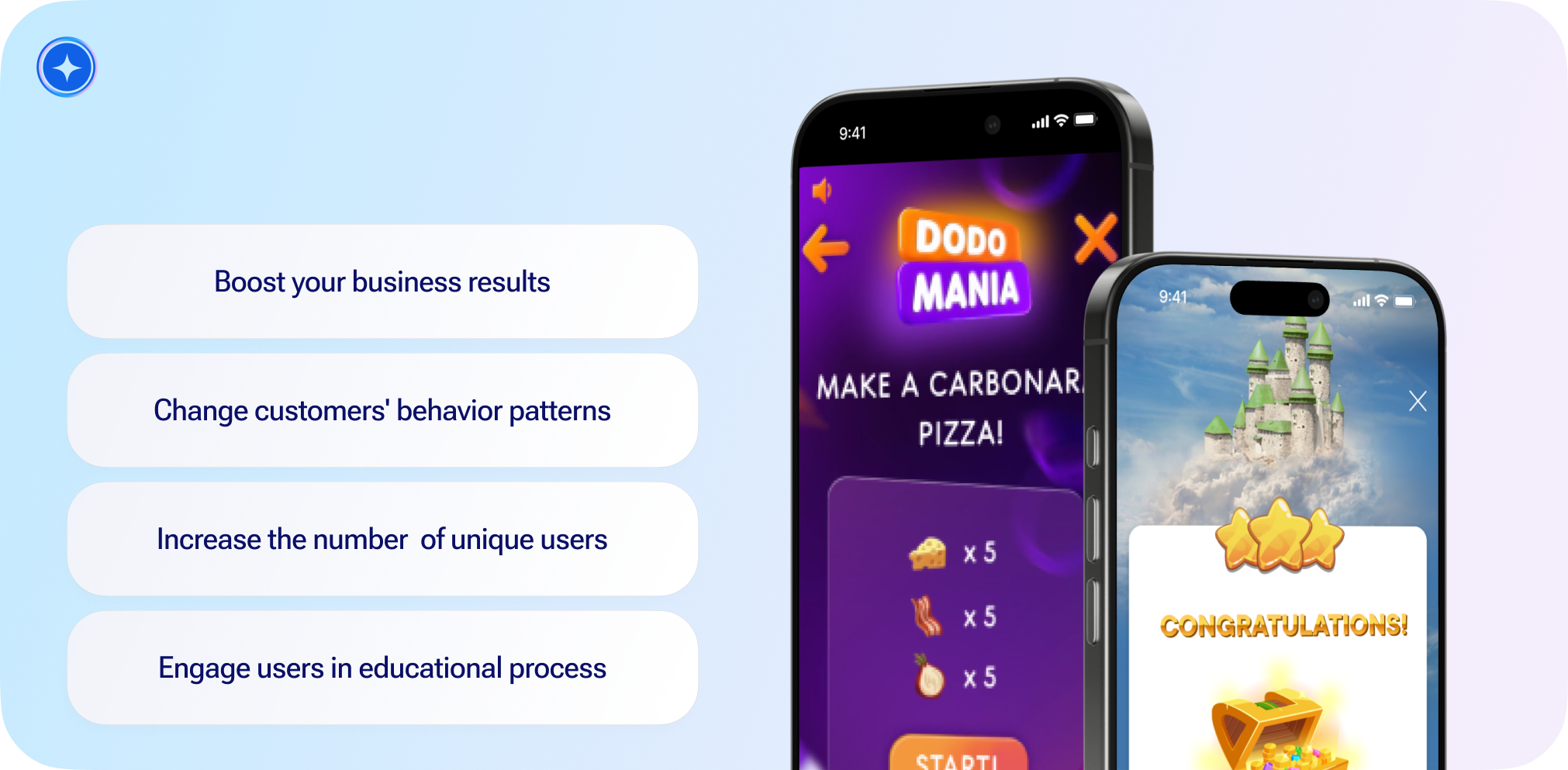
Think about the last time you couldn’t put a game down. It wasn’t just about winning—it was about thrill of the challenge, satisfaction of achieving something, and the joy of being rewarded. Now, imagine channeling that same energy into your app.
Engagement is one of the most critical metrics that gamification directly influences. Beyond just keeping users active, enhanced engagement through gamification plays a pivotal role in driving key business objectives, such as customer retention, brand loyalty, and even revenue growth.
⚡ If you’re looking for proven strategies to boost engagement during key holiday campaigns, Top 10 In-App Gamification Campaigns for BFCM, Christmas, and Beyond report offers valuable examples and insights to help you implement gamification effectively and drive your business forward.
Why a Non-Gaming App Needs Gamification
When your users are engaged, they’re not just clicking, they’re invested.
- Monetization
The primary goal of gamification in this context is to support commercial activities and drive sales.
These types of games are particularly effective when paired with major marketing events like sales, themed holidays, or company anniversaries.
For instance, monetization can work through the distribution of promo codes within a game, which users can then redeem for purchases, or by offering additional game attempts after a purchase is made.
The game below provides users with 2 daily attempts to win a promo code.
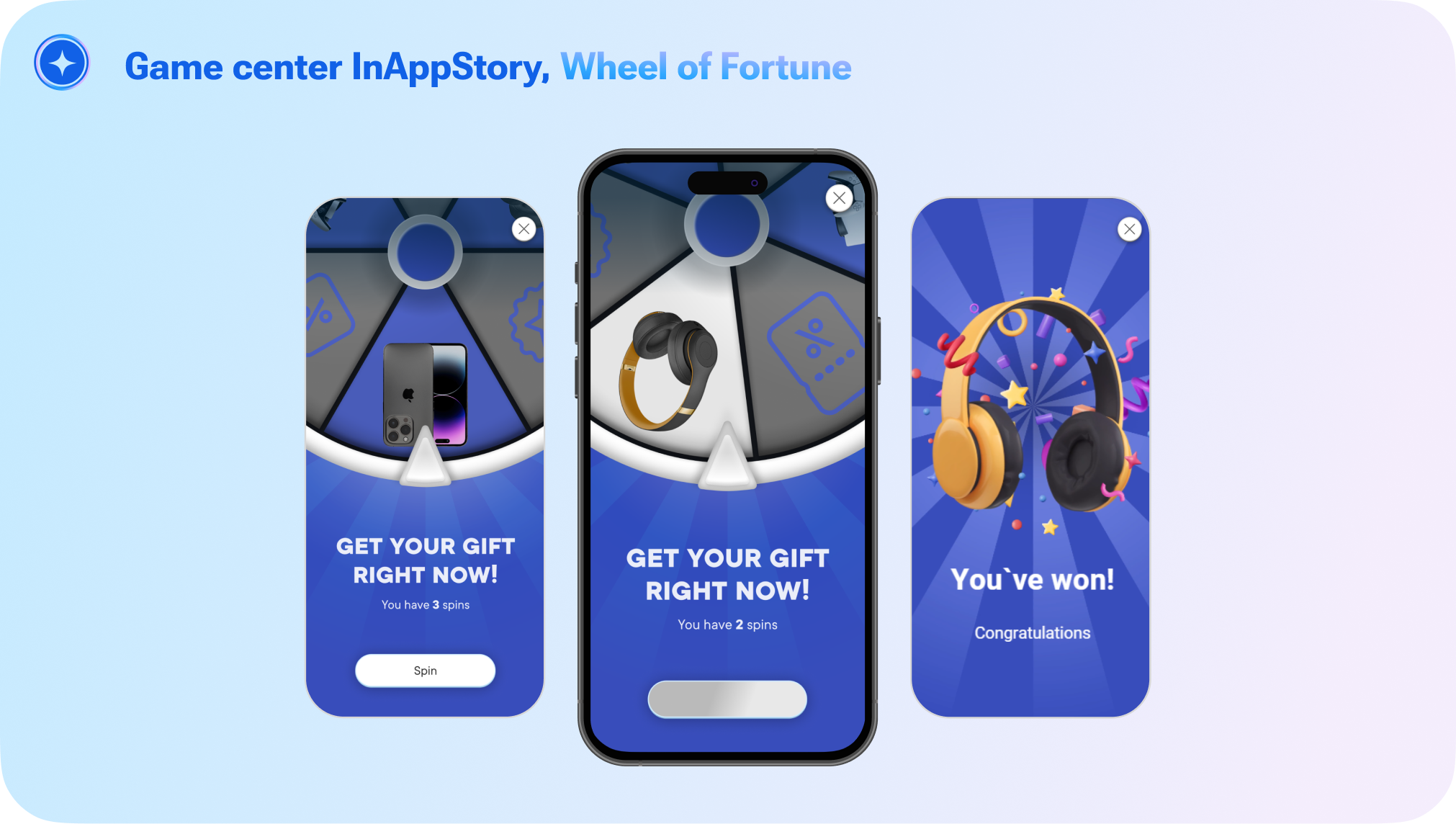
Loyalty
These games are always relevant, as they don’t necessarily require direct financial investment from users. Instead, they help build a habit of frequent app use, reinforcing the bond between your brand and its customers.
The focus here is on game mechanics and motivation, driving users to return to the app regularly.
For example, in a loyalty program, users might be able to spend their loyalty points to purchase in-game currency, motivating them to engage more frequently with both the game and the app. Game currency, in particular, encourages users to spend more time in the game, deepening their connection to your brand.
Scenario of the game shown below provides loyalty program members with extra daily coins so they can buy more goods for their pet. Users get 100 every time they reach 50 euro bill.
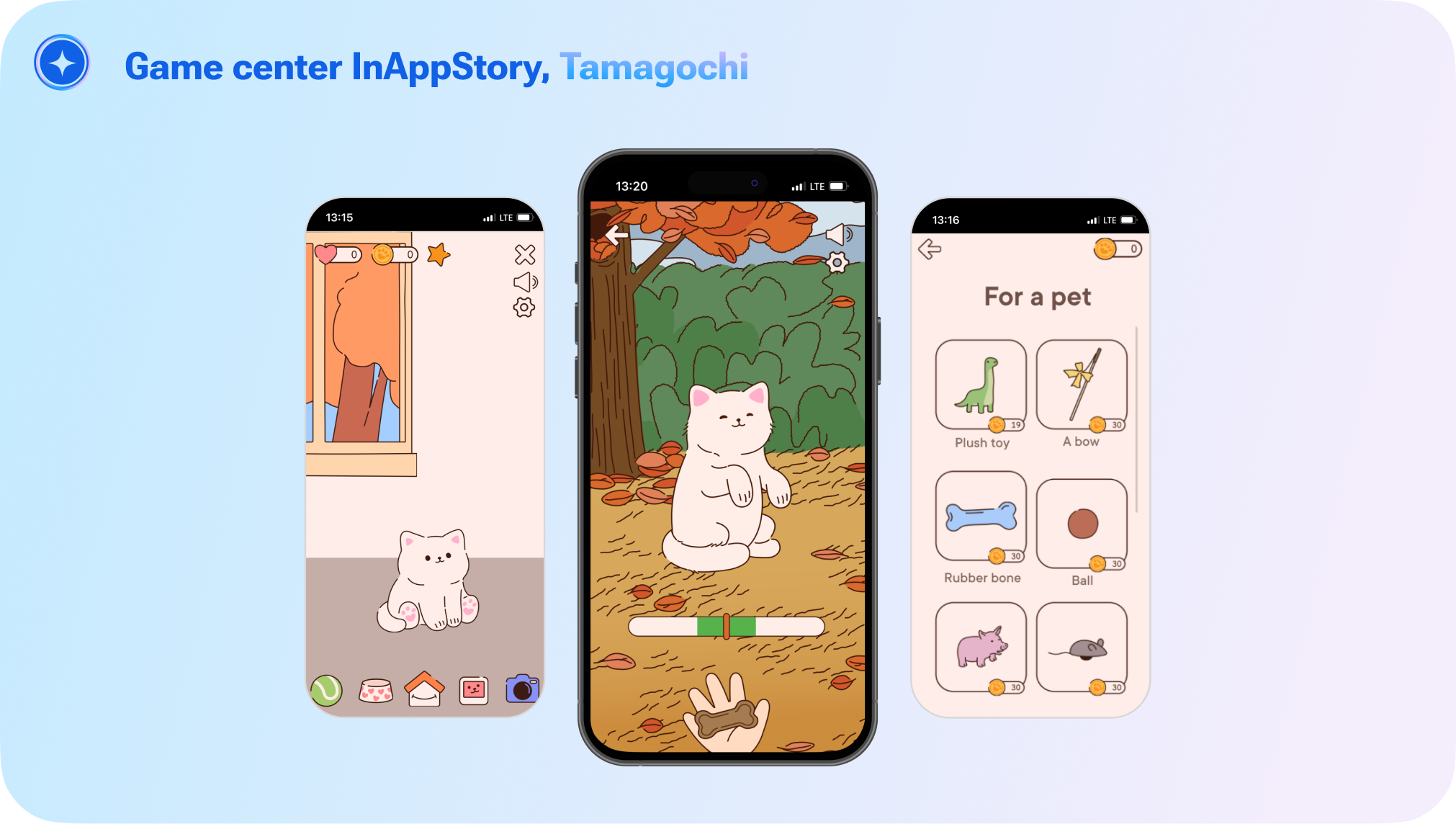
Education
Teach users how to navigate your service or other important aspects of your business. These games are valuable at any time, as they indirectly influence business metrics by shaping user behavior in a way that aligns with your goals.
The emphasis is on context and storyline, creating an experience that not only informs but also engages users on a deeper level.
A great example of this is fintech, where there is often a barrier to entry for new users. Games can teach users how to invest in the stock market by breaking down complex financial concepts into simple, interactive tasks.
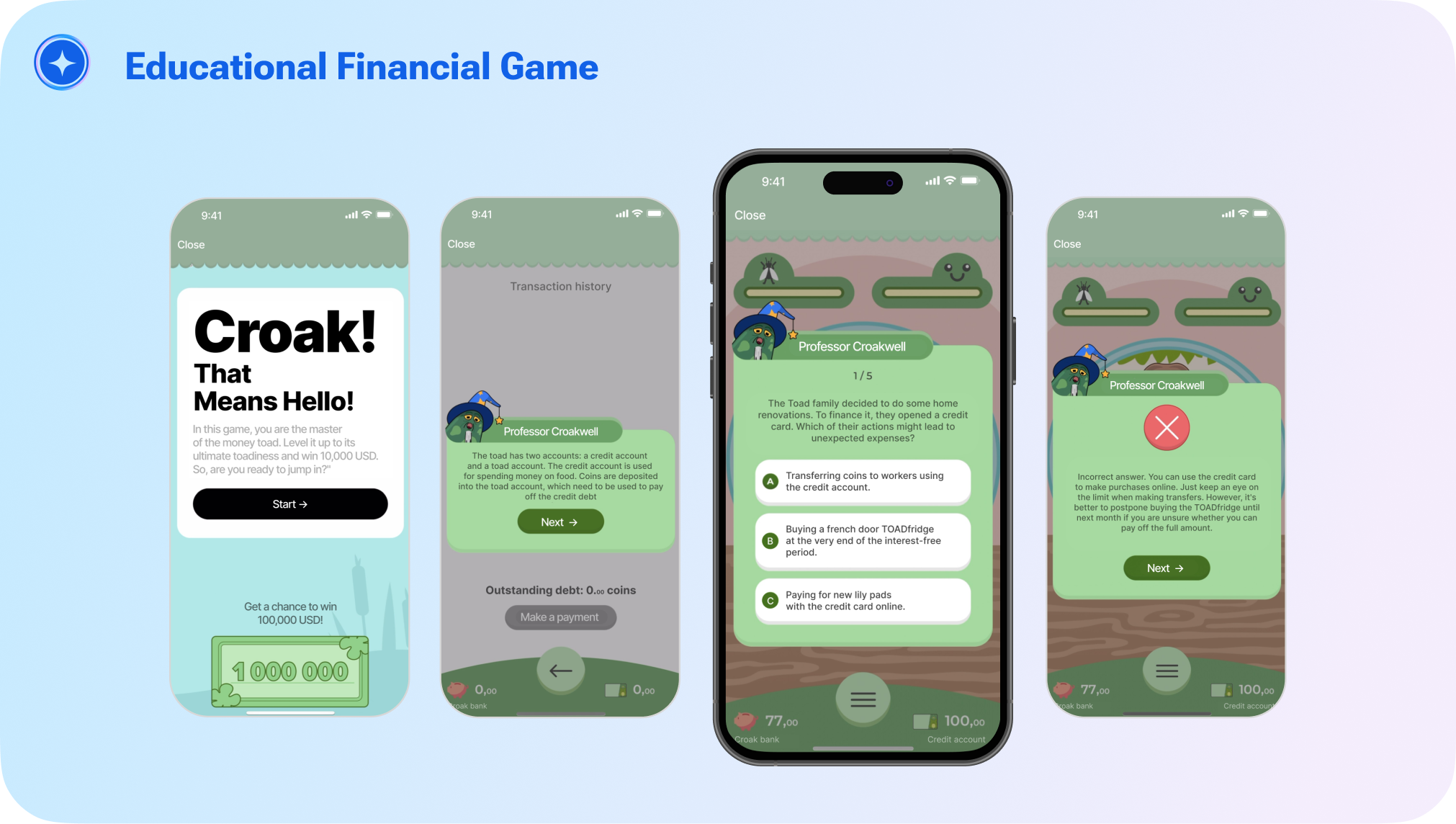
According to Gartner, gamification can significantly enhance various business processes:
✔ Increased engagement and retention: Gamification encourages users to interact more frequently with your app and keeps them coming back by making their interactions enjoyable and rewarding.
✔ Improved conversion metrics: Tying gameplay to business goals like purchases or sign-ups can directly boost your conversion rates.
✔ Boosts marketing campaigns: Gamification acts as a powerful tool to enhance your marketing campaigns, ensuring they receive the attention and engagement they need to succeed.
Gamification Use Cases by Industry
The table below breaks down common use cases across industries, paired with the types of gamification that actually move the needle. Use it as a starting point to spark ideas for your app or to double-check if your current setup makes sense.
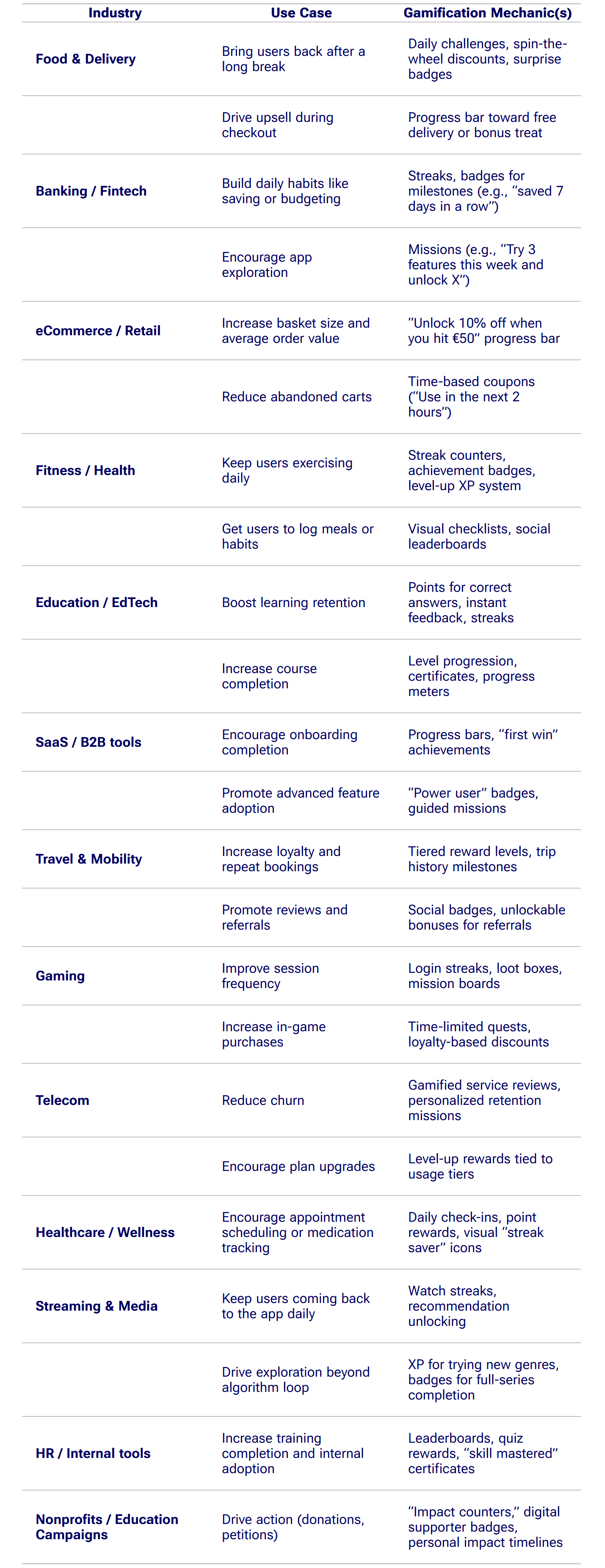
Specific Use Cases
Now that we've seen how gamification can keep users engaged and loyal, let's dive into specific use cases for enterprises.
Case 1. Product Launch
When Papa Johns UAE introduced their new Grilled Cheddar Pizza, they wanted to do more than just announce it — they aimed to create an immersive experience that would engage customers in a fun and memorable way.
To bring this vision to life, they launched the Grilled Cheddar Space Journey game within their app. This gamified experience invited users to embark on an intergalactic mission alongside Mozzarella, Cheddar, and Parmesan, racing against time to assemble the perfect pizzas across three thrilling levels. The game wasn’t just about entertainment — it was designed to engage users with the new Grilled Cheddar Pizza in a unique and interactive way.
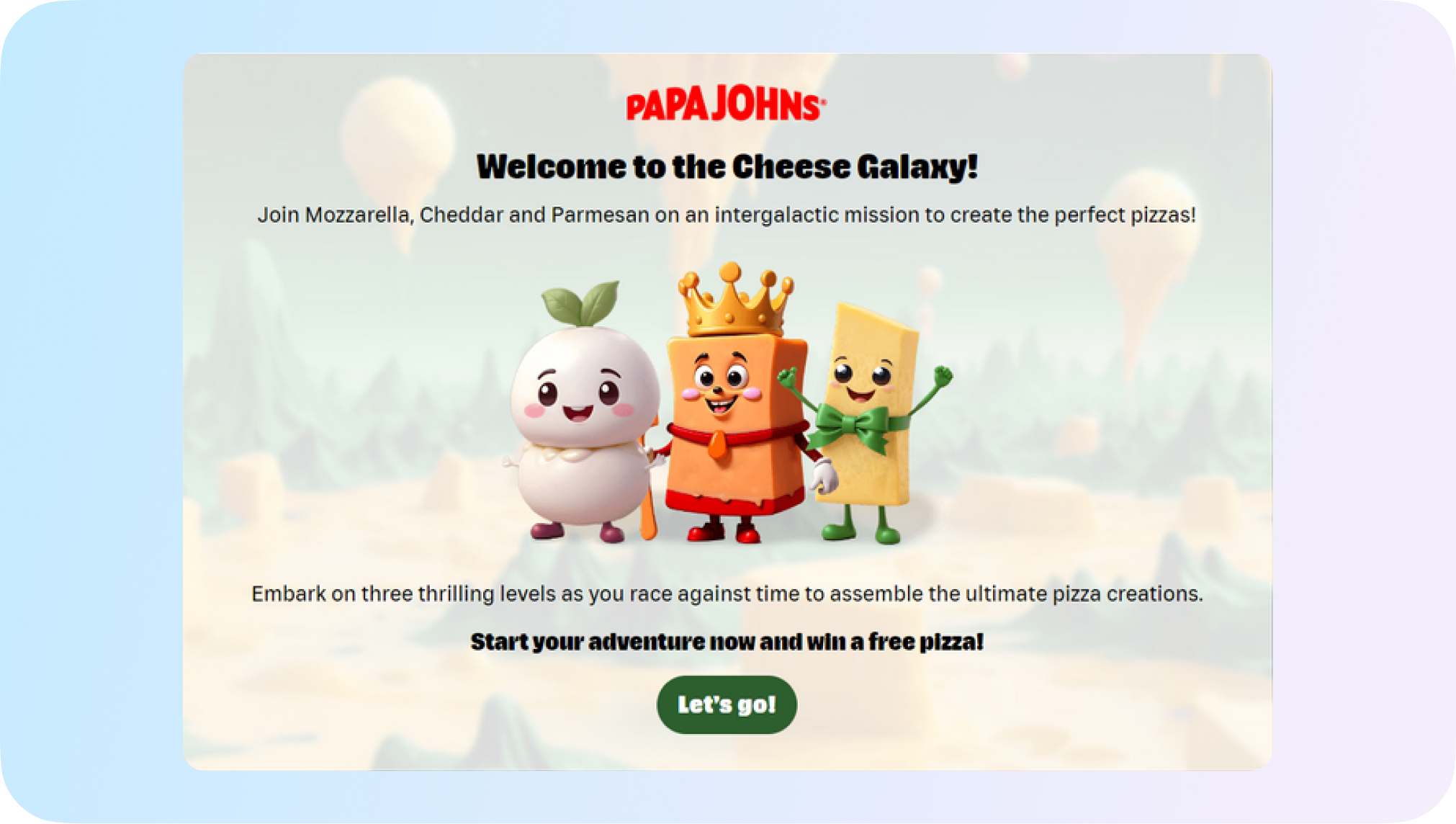
The objective was to generate excitement around the new product and encourage customer participation.
As players progressed through the levels, they had the chance to win instant rewards, including a free pizza. This combination of gameplay and tangible rewards created a strong incentive for users to engage with the launch and try the new pizza. By turning the product launch into a gamified event, Papa John’s not only increased awareness of the new Grilled Cheddar Pizza but also boosted sales, as customers were eager to participate in the game and claim their rewards.
And there’s another project you will love: Papa Johns teamed up with InAppStory to launch their new Shawarma Pizza with an interactive game. The result? Over 12,951 engaged users and 420 total hours of playtime — proving just how impactful a gamified launch can be.
Case 2. Low Season Promotion
Grocery deliveries have a substantial slowdown in January after Christmas and NY seasons. The business division of Magnit, a large grocery chain, decided to check how mobile gamification mechanics can stimulate incremental demand to make new orders in low seasons.
Magnit introduced a gamified experience within their mobile app, which offered customers the opportunity to earn rewards, such as discounts and promo codes, by participating in various in-app challenges. The game’s mechanics were designed to be easy to understand yet compelling enough to encourage repeat participation.
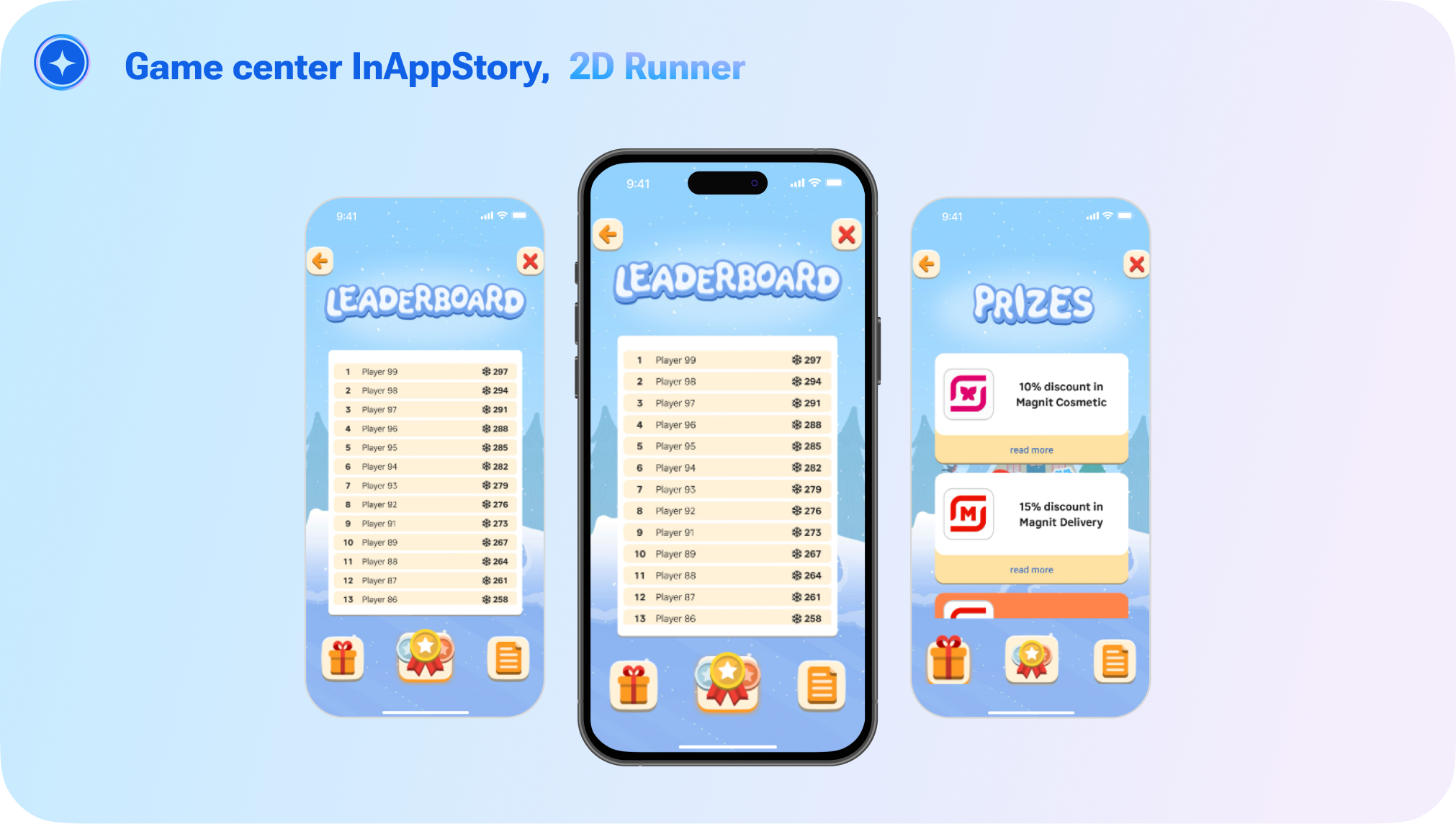
The game not only kept customers engaged but also drove a noticeable increase in sales during the slow season. Over 250,000 unique players participated, generating 580,000 gaming sessions. Additionally, 82,000 promo codes were allocated, with a 21% realization ratio.
For a detailed overview of how InAppStory collaborated with Magnit to achieve these results, you can explore the full case study.
Case 3. Holiday Marketing
Imagine launching a holiday-themed game within your app, designed to bring extra fun and excitement to the shopping experience. One successful example involved a festive "Match-Bubbles" game, where players could earn rewards by completing levels that became progressively more challenging. The game was customized to reflect the brand’s holiday spirit, making it both visually appealing and seasonally relevant.
The game was integrated directly into the mobile app and was available only to registered users, adding an element of exclusivity and encouraging new sign-ups. As users engaged with the game, they accumulated points and unlocked rewards, such as discounts or promo codes, which could be redeemed during their holiday shopping.
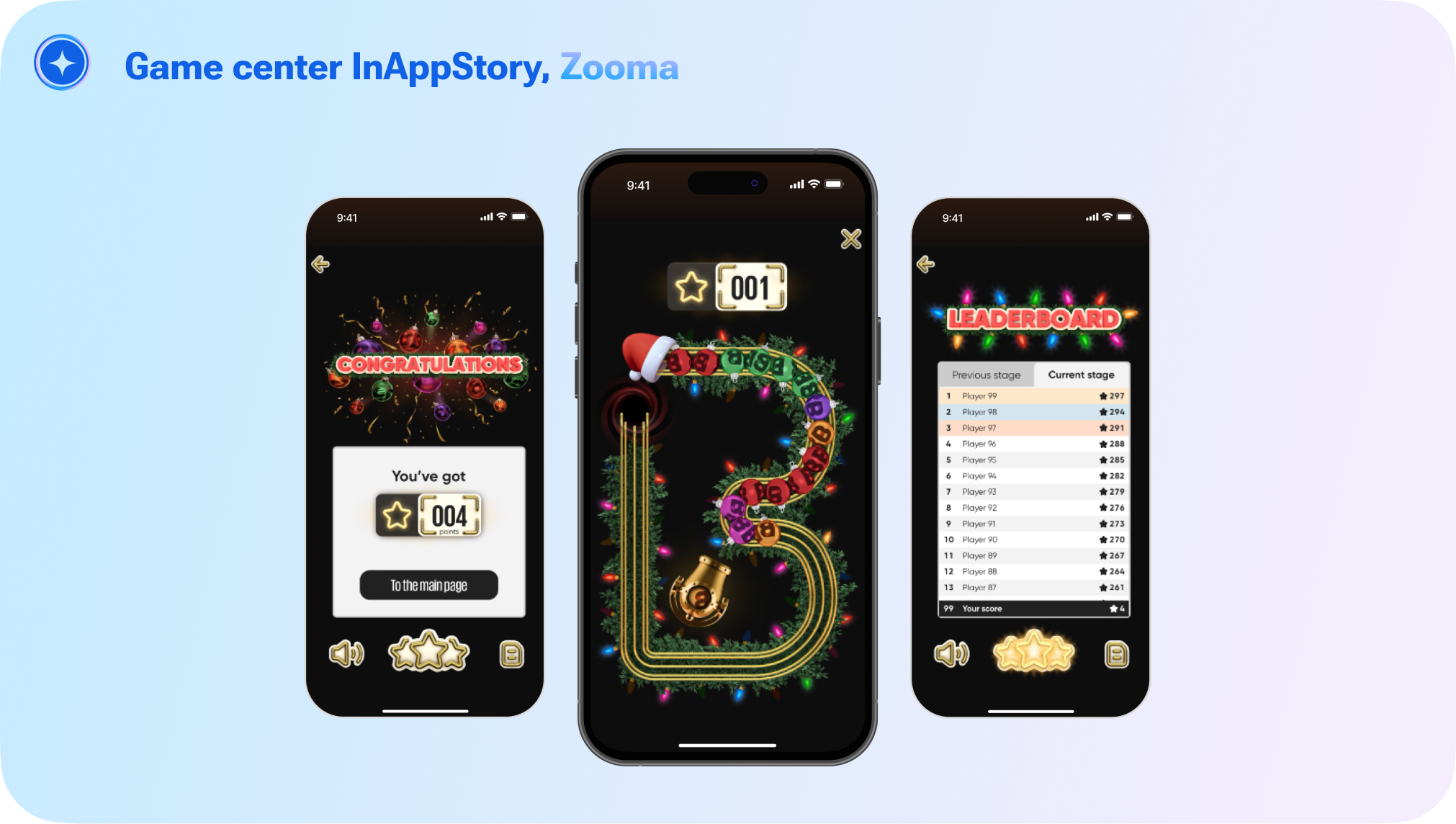
The impact of this gamified approach was significant. The game attracted over 300,000 unique players and generated more than 620,000 gaming sessions, with 2 million impressions overall. Additionally, 18% of users who played the game were actively engaged.
Case 4. Collaborative Campaigns
Imagine two popular brands partnering to create a joint campaign. Rather than relying on traditional advertising, they launch a collaborative game that pulls in elements from both brands. Users could engage with the game to unlock special offers from both companies, driving interest and participation in a way that benefits both brands equally.
The game could involve a series of challenges that reflect the strengths of both brands. For example, a fitness app might partner with a sportswear company to create a gamified challenge where users earn points by tracking their workouts and shopping for gear. The points could then be redeemed for rewards from either brand, incentivizing continuous participation.
That’s the magic of gamification. It can keep people coming back for more and make even the most boring tasks exciting. But, let’s be honest—gamification isn’t always easy.
Challenges and Obstacles in Gamification
There are some real challenges to tackle. Let’s dig into the common bumps in the road and how you can smooth them out with some clever tricks.
- Time-to-Market Pressure
Getting a game up and running takes time, especially if it’s custom-built. But in today’s fast-paced world, waiting months to launch could mean missing the boat.
💡 Consider no-code platforms to speed things up. They might not offer all the bells and whistles, but they’ll get you in the game faster. - Aligning with Business Goals
A game that’s fun but doesn’t move the needle for your business? Not so great. The challenge is making sure your game drives real business results, like boosting sales or increasing user retention.
💡 Work closely with your team to ensure game mechanics are tied directly to your business objectives. Think of gamification as part of your broader strategy, not just an add-on. - User Experience Integration
Gamification should feel like a natural part of your app, not a gimmick. If it disrupts the user experience, it’s doing more harm than good.
💡 Make sure the game enhances the user journey rather than interrupting it. User feedback is gold—use it to refine the experience. - Measuring Success
How do you know if your gamification strategy is working? Engagement metrics are great, but they need to tie back to your bottom line.
💡 Set clear KPIs from the start and keep a close eye on them. Use analytics to track how the game is influencing key business metrics like conversions or customer loyalty. - Promoting the Game
Even the best game can fall flat if no one knows about it. Promotion is key, and it’s something you need to plan for from the start.
💡 Integrate your game’s promotion into your overall marketing strategy. Use email campaigns, social media, and in-app notifications to build hype before the launch.
Conclusion
In the end, gamification is a bit like cooking a gourmet meal—you need the right ingredients, a dash of creativity, and a willingness to taste-test along the way. Sure, there will be some trial and error (and maybe a few burnt soufflés), but with the right tools and strategies, you’ll launch a game that users can’t resist.
Just remember, keep it fresh, keep it fun, and don’t forget to enjoy the process. After all, even the best chefs need to sample their own dishes!
At InAppStory, we specialize in turning your business goals into engaging, gamified experiences. Whether you need a quick solution or a fully customized game, we’ve got you covered.
1. Game Center: no-code solution
Game Center offers a variety of pre-built games, including Puzzle, Postcards, Wheel of Fortune, Memories, Lootboxes. The no-code approach allows you to easily customize the game’s visuals, difficulty, attempts logic, and rewards to align with your brand’s identity and business goals.
Game Center is constantly expanding its offerings with new mini-games. For instance, the recently added Match 3 game brings the addictive mechanics of popular games like Candy Crush into your app, offering two engaging modes:
- Instant Win Mode, where players can quickly score points and unlock prizes, and
- Leaderboard Mode, which fuels competition by letting users climb the ranks.
With customizable goals and rewards, the Match 3 game is the perfect addition for brands looking to enhance engagement and drive interaction.
⚡ We love bringing you fresh ways to play, so we’re excited to introduce Sorting — our newest puzzle game in the Game Center. It's great for creating a challenge and supporting longer promotions. Up for it?
But that’s not all! We’re also slicing up some fun with Slicer — a dynamic game where players must cut the right items and avoid the wrong ones. With instant win opportunities and a leaderboard, it’s a great way to keep engagement high. Plus, it’s easily customizable for any theme, making it ideal for highlighting special deals and offers.
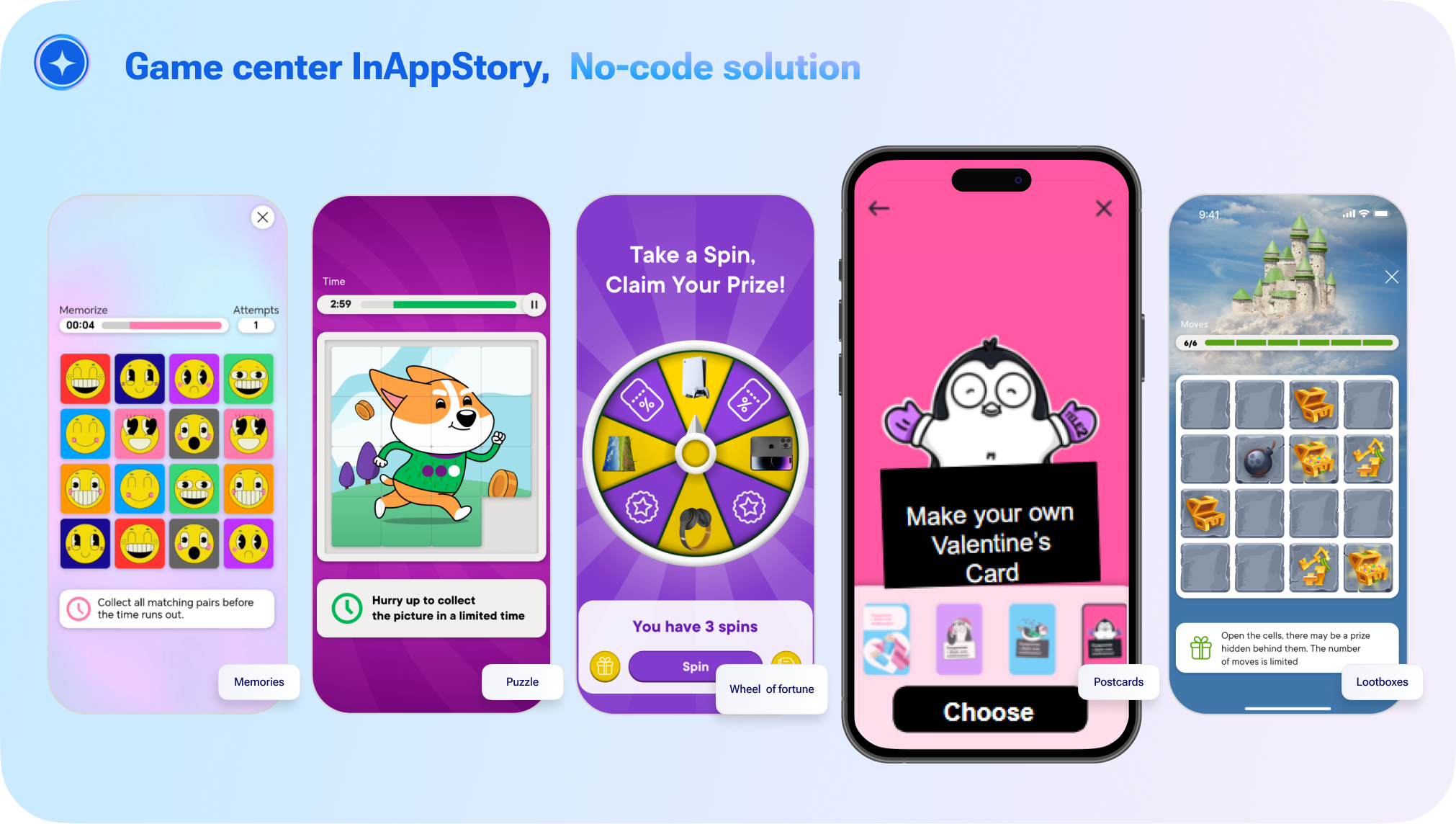
2. Custom Games
For brands looking for a completely unique experience, our custom game development service offers tailored solutions that fit your specific needs. We design and build games that not only entertain but also align with your long-term business strategy.
Why InAppStory?
- Proven Success: With over 50 successful gamification projects, we know what it takes to create impactful gamified experiences.
- Expertise: Our team combines deep game design knowledge with business strategy, ensuring your gamified experiences are not just fun, but also effective.
- Full Support: From initial concept to launch, we’re with you every step of the way to ensure your gamification strategy delivers results.

